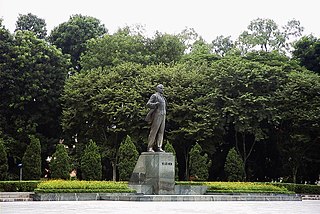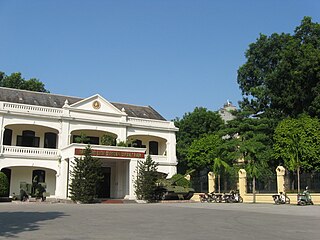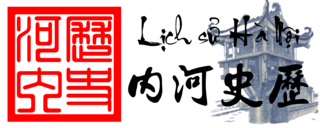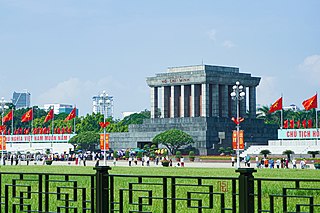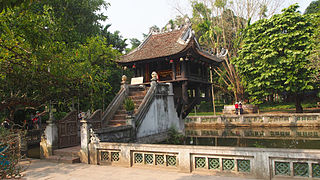Self-guided Sightseeing Tour #1 in Hanoi, Vietnam
Legend
Guided Free Walking Tours
Book free guided walking tours in Hanoi.
Guided Sightseeing Tours
Book guided sightseeing tours and activities in Hanoi.
Tour Facts
3.9 km
41 m
Experience Hanoi in Vietnam in a whole new way with our free self-guided sightseeing tour. This site not only offers you practical information and insider tips, but also a rich variety of activities and sights you shouldn't miss. Whether you love art and culture, want to explore historical sites or simply want to experience the vibrant atmosphere of a lively city - you'll find everything you need for your personal adventure here.
Activities in HanoiIndividual Sights in HanoiSight 1: Nhà hát Hồng Hà
Hong Ha Theater is located at 51 Duong Thanh, Cua Dong Ward, Hoan Kiem District, Hanoi, is a place for the art of tuong. Built in 1954, the theater is the main performance venue of the Vietnam Tuong Theater. However, this place also performs rowing performances, cai luong, and spoken dramas, but when the tuong troupe does not perform. Hong Ha Theater has 393 seats, of which 273 seats are near the stage and 120 seats are in the balcony area. The theater stage is 7.89 meters wide and 6.41 meters high.
Sight 2: Hanoi Train Street
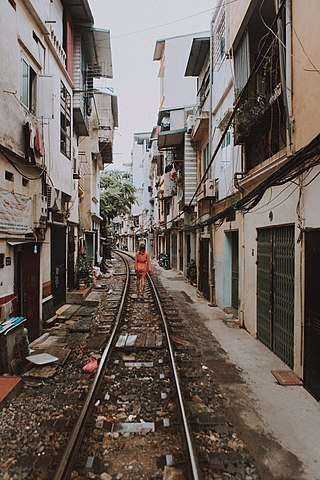
Hanoi Train Street is a narrow train bypass in Hanoi which sees a twice-daily train pass close to buildings on either side of the tracks. The track was built by the French in 1902 and is still an active rail line as of 2023.
Sight 3: Lenin Park
Lenin Park is a park named Lenin located opposite the Vietnam Military History Museum in Hanoi. It is located on Dien Bien Phu, Tran Phu and Hoang Dieu streets. The campus of the park is triangular, with a total area of 17,183 m², which includes the Lenin monumental architectural complex.
Sight 4: Vietnam Military History Museum
Get Ticket*The Vietnam Military History Museum, set up on 17 July 1956, is one of seven national museums in Vietnam. It covers 12,800 m2. It is situated in central Hanoi, opposite the Lenin Park and near the Ho Chi Minh Mausoleum. The Flag Tower of Hanoi is located inside of the museum grounds.
Sight 5: Doan Mon Gate
Doan Mon is the southern main gate to the Imperial Citadel of Thang Long, built during the Ly Dynasty, but the Doan Mon gate that still exists today was built by the Le So Dynasty and was renovated and renovated under the Nguyen dynasty. This is one of the 5 remaining works in Thang Long, namely: Hanoi Flagpole, Cua Bac, Doan Mon, Kinh Thien Palace and Temple of Literature - Quoc Tu Giam. Doan Mon Gate is U-shaped, 46.5 m long from East to West, has 5 arches, the central arch is for the king to go, the two terminus gates next to are Ta Doan Mon and Huu Doan Mon. The current gate is intact. Currently, the door is the entrance and exit of the Imperial Citadel of Thang Long.
Sight 6: Imperial Citadel of Thang Long
The Imperial Citadel of Thăng Long is a complex of historic buildings associated with the history of Vietnam located in the centre of Hanoi, Vietnam. Its construction began in 1010 and was completed in early 1011 under the reign of Emperor Lý Thái Tổ of the Lý dynasty. Most of the existing structure is dated to the extensive reconstruction of the old Imperial Citadel ordered by Gia Long in 1805, but the Citadel was largely demolished by the French to allow more land for offices and barracks.
Sight 7: Ba Dinh Square
Join Free Tour*Ba Đình Square is the name of a square in Hanoi where president Ho Chi Minh read the Proclamation of Independence of the Democratic Republic of Vietnam on September 2, 1945. It is named after the Ba Đình Uprising, an anti-French rebellion that occurred in Vietnam in 1886–1887 as part of the Cần Vương movement. When Ho Chi Minh died, the granite Ho Chi Minh Mausoleum was built here to display his embalmed body. It remains a major site of tourism and pilgrimage.
Sight 8: Presidential Palace Historical Site
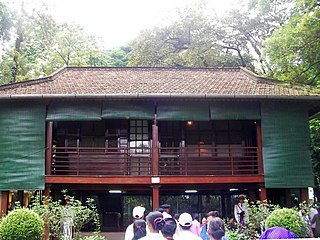
Presidential Palace Historical Site, which is located in Hanoi, Vietnam, is the place where Ho Chi Minh lived and worked during most of his time as leader of North Vietnam, from December 19, 1954 to September 2, 1969.
Sight 9: Ho Chi Minh Mausoleum
The President Ho Chi Minh Mausoleum is a mausoleum which serves as the resting place of Vietnamese revolutionary leader and President Ho Chi Minh in Hanoi, Vietnam. It is a large building located in the center of Ba Đình Square, where Ho, Chairman of the Workers' Party of Vietnam lived from 1951 until his death in 1969, read the Declaration of Independence on 2 September 1945, establishing the Democratic Republic of Vietnam. It is open to the public every morning except Monday and Friday.
Sight 10: One Pillar Pagoda
The One Pillar Pagoda, formally belongs to an architecture complex called Diên Hựu tự which means 'pagoda of extended blessings'. The pagoda is a historic Buddhist temple in the central Ba Đình district, Hanoi, the capital of Vietnam. The most famous part of this architecture complex is Liên Hoa Đài (蓮花臺) means 'the lotus pedestal' which is a temple with special structure: a building laid on one pillar. The original pagoda was built in 1049, had some additions and was perfected in 1105. It is regarded alongside the Hương Temple, as one of Vietnam's two most iconic temples.
Sight 11: Ho Chi Minh Museum
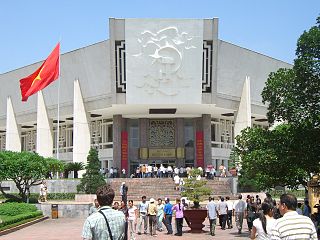
The Ho Chi Minh Museum is located in Hanoi, Vietnam. Constructed in the 1990s, it is dedicated to the late Vietnamese leader Ho Chi Minh and Vietnam's revolutionary struggle against foreign powers.
Share
How likely are you to recommend us?
Disclaimer Please be aware of your surroundings and do not enter private property. We are not liable for any damages that occur during the tours.
GPX-Download For navigation apps and GPS devices you can download the tour as a GPX file.
